Flak guns and Flak SPGs
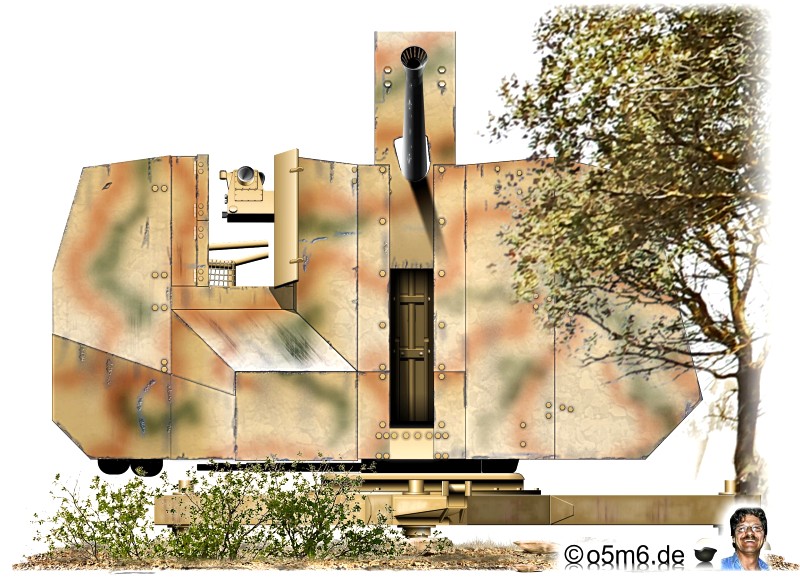
In 1938, Krupp and Rheinmetall were commissioned to begin further development of the Flak 36. The Flak 18 ammunition should continue to be used. Particular attention should be paid to simplifying production.
In 1942 Rheinmetall won the contract.
Although this gun did not differ externally from the 3.7 cm Flak 18, 36 and 37, it had a completely different, fully automatic, gas-operated action. Of low build, the 3.7 cm Flak 43 had a pedestal tri-angular mount with a shield.
In 1942 Rheinmetall won the contract.
Although this gun did not differ externally from the 3.7 cm Flak 18, 36 and 37, it had a completely different, fully automatic, gas-operated action. Of low build, the 3.7 cm Flak 43 had a pedestal tri-angular mount with a shield.
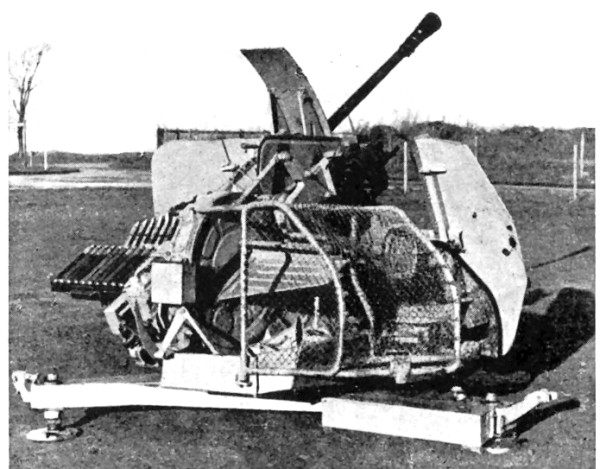
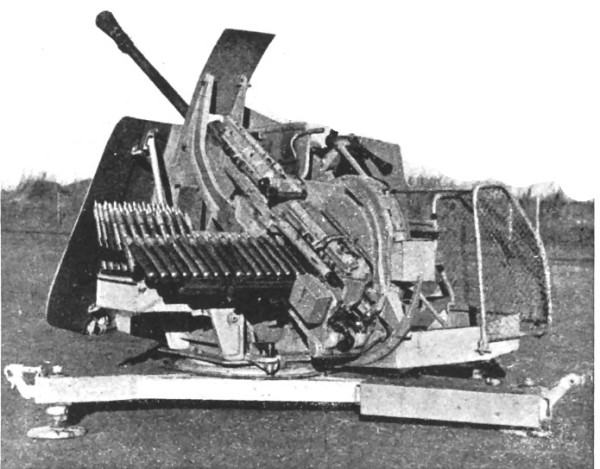
Characteristics
| Caliber | 37 mm (1.45 inches) |
| Length of tube | 9 feet 8.16 inches |
| Weight in action | 1.37 tons |
| Effective ceiling | 5,000 feet (approx.) |
| Maximum horizontal range | 7,200 yards (approx.) |
| Rate of fire | 150 rounds per minute |
| Muzzle velocity | 2,750 feet per second |
| Traverse | 360° |
| Elevation | -6° to +90° |
| Antiaircraft sights | Flakvisier 37/43, Schwebedornvisier |
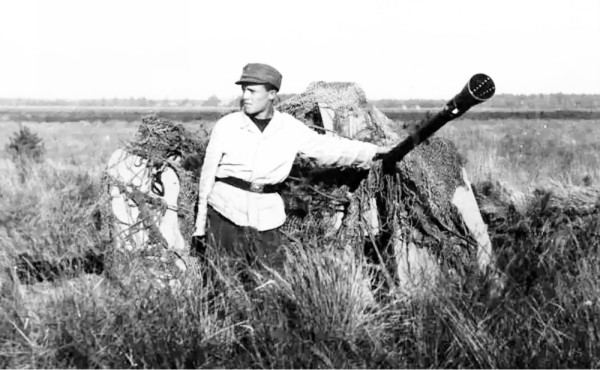
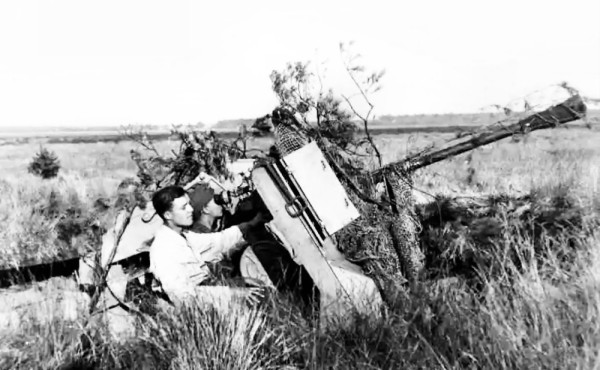
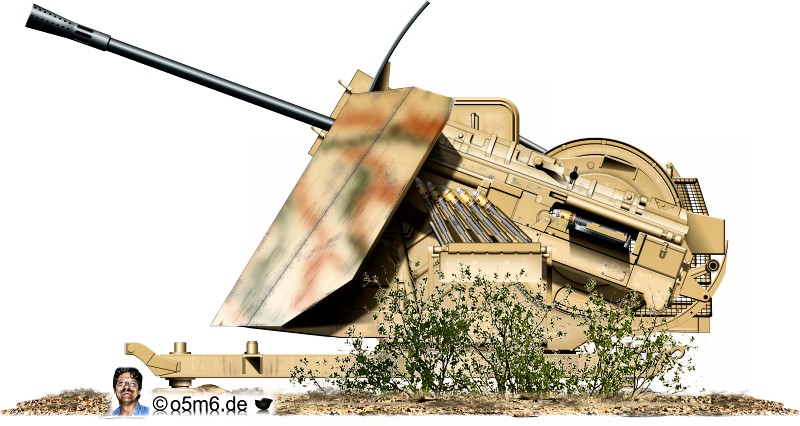
The return and forward movement were controlled by a combination of spring and fluid brakes. Compared to the pure spring pre-hauler, the forces exerted on the carriage were significantly reduced, which allowed for a less massive construction. Therefore, the carriage could be made using sheet metal stamping technology (as in automobile construction), which meant a reduction in material requirements from 5250 kg to 1500 kg and a reduction in production time from 4320 hours to 1000 hours per device.
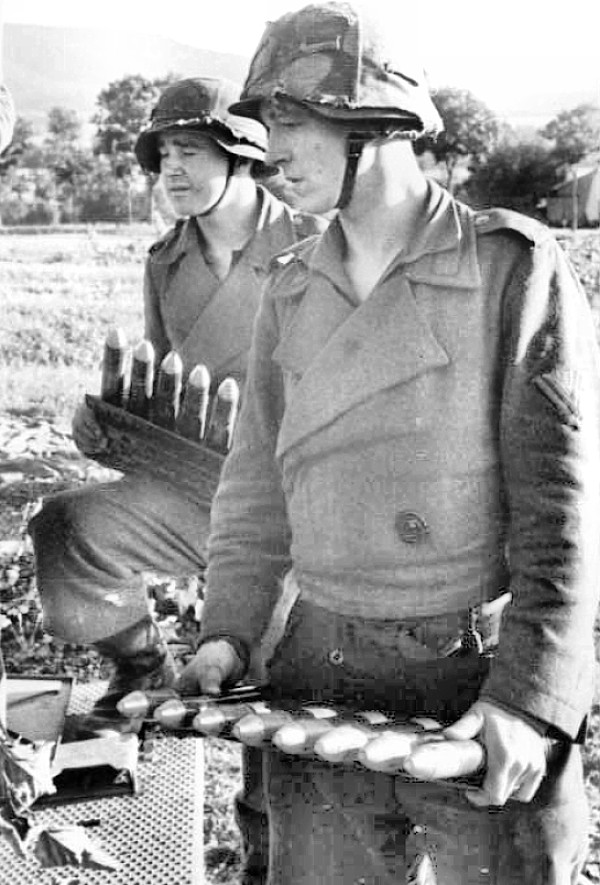
Loaders with Sprengpatrone 18 mags
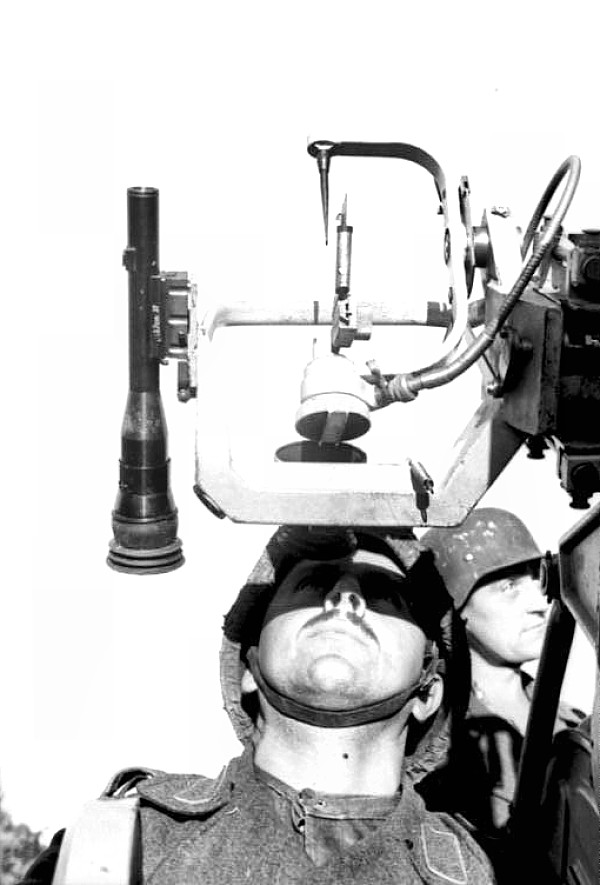
Gunner behind Schwebedornvisier
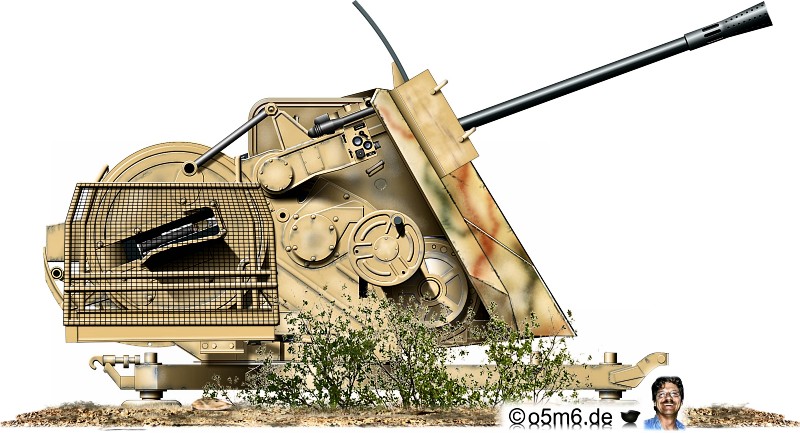
At the same time, the weight of the weapon also decreased. A protective shield with a fixed middle section and two foldable side sections was part of the mount.
The ammunition was fed from the left into strips holding eight cartridges and the cases were ejected into a collecting basket on the right.
The anti-aircraft gun came in two versions. The Flak 43/1 had a triangular bed. This weapon was mobile in the single-axle SdAnh.58. For stationary use, the Flak 43/2 was mounted on a base mount. Only one gunner was needed to adjust the Flakvisor 37/43. Like its predecessors, the gun was fired by the gunner by pressing a footrest.
The ammunition was fed from the left into strips holding eight cartridges and the cases were ejected into a collecting basket on the right.
The anti-aircraft gun came in two versions. The Flak 43/1 had a triangular bed. This weapon was mobile in the single-axle SdAnh.58. For stationary use, the Flak 43/2 was mounted on a base mount. Only one gunner was needed to adjust the Flakvisor 37/43. Like its predecessors, the gun was fired by the gunner by pressing a footrest.
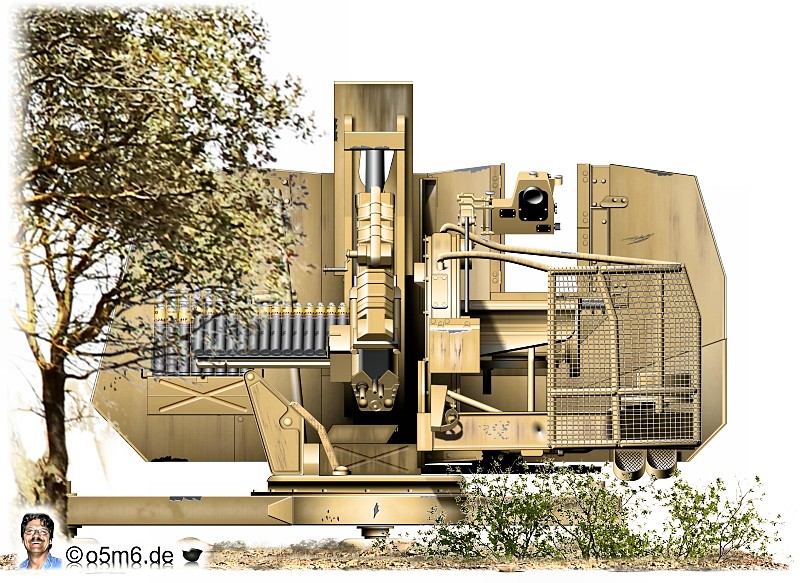
From July 1944 onwards, 180 guns were delivered every month. By the end of the year this number had increased to 450 guns. In February 1945, 1,032 guns were in Luftwaffe and Heeresflak use.
Source :
The gun proved most efficient against the ubiquitous strafing Allied fighters and, erroneously, against German fighters as well, during operation "Bodenplatte" on New Year 1945.
Source :
www.ww2technik.de and
"TM-E 30-451 Handbook on German Military Forces" via www.lonesentry.com.
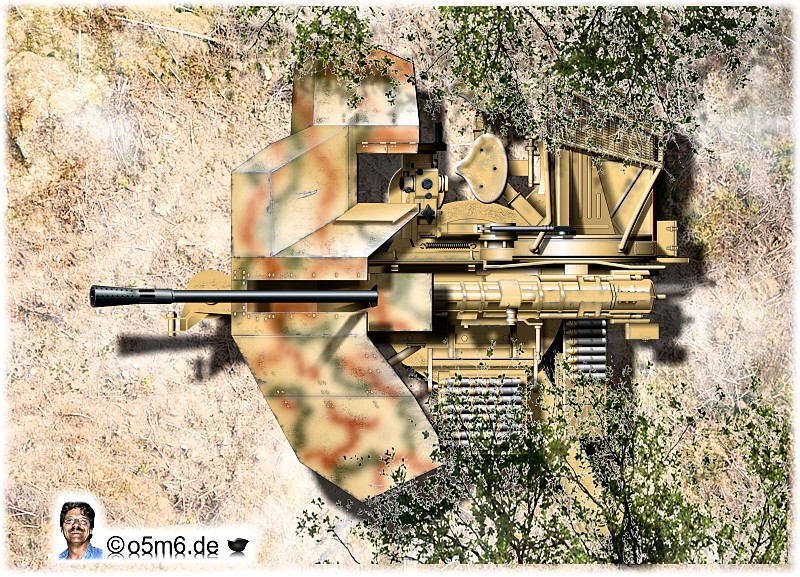
Further read : Waffen Revue #45 [28 MB, in German]
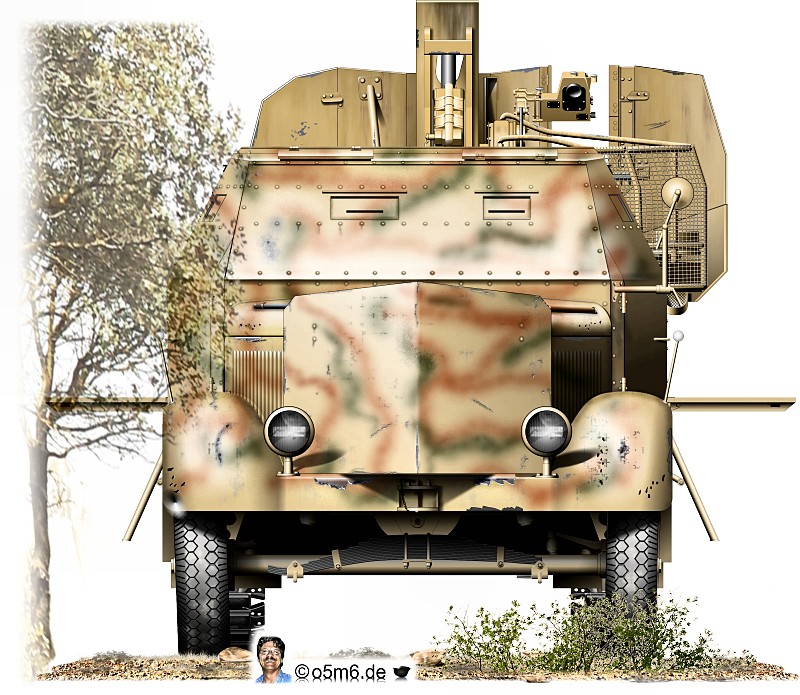
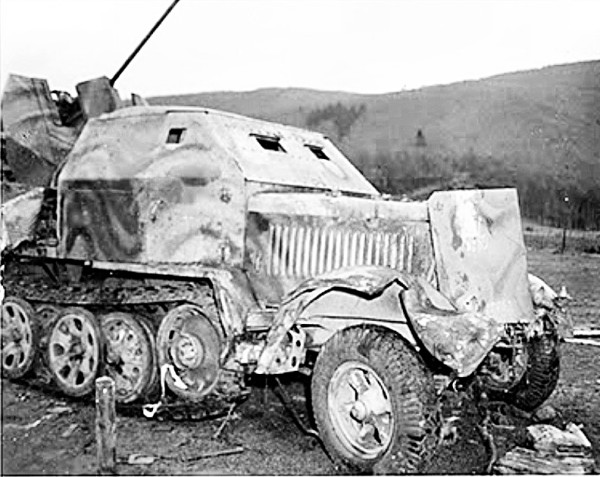
Damaged amd abandoned Sfl. in wavy camo pattern
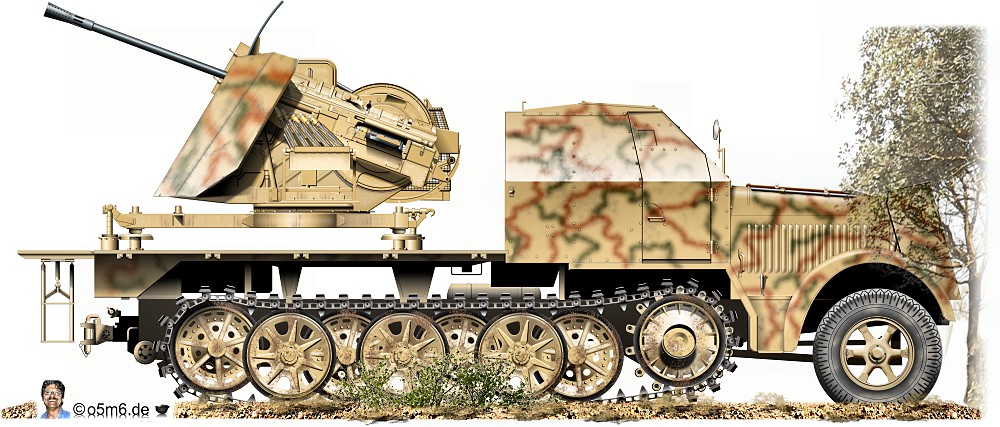
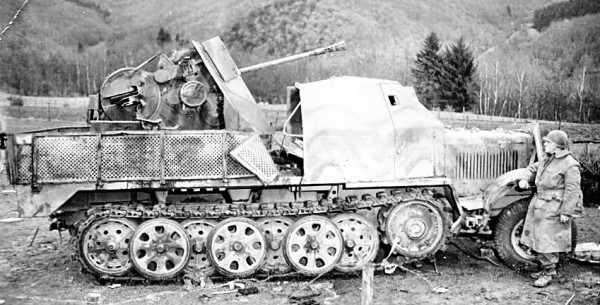
Late style of fold down sides with perforated metal plates
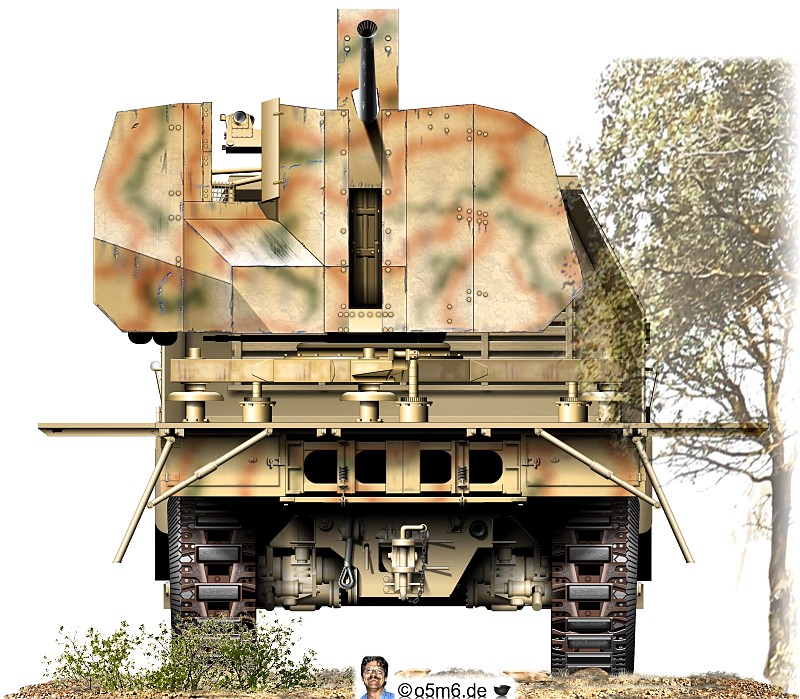
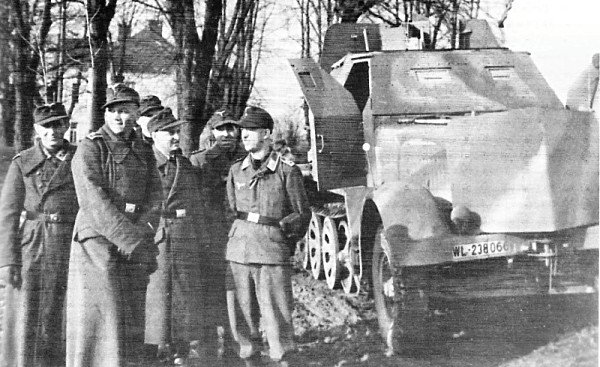
Luftwaffe unit
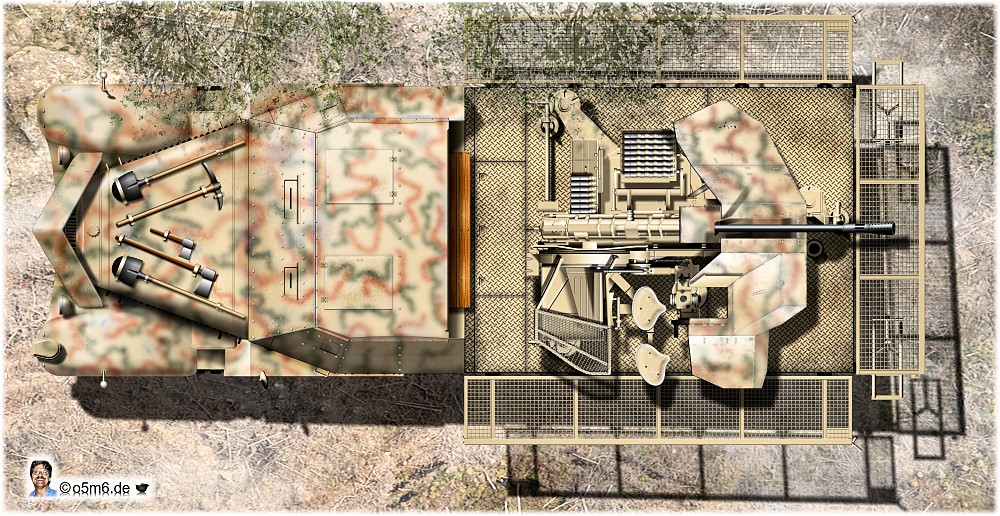
All drawings © o5m6.de .All rights reserved.
No publication in any form without the author's written permission.
Last Updated: Apr 10, 2024
No publication in any form without the author's written permission.
Last Updated: Apr 10, 2024